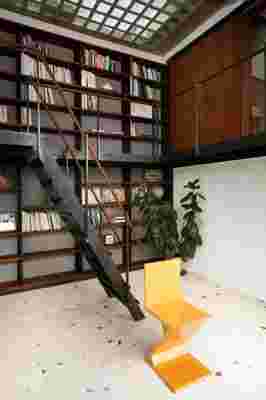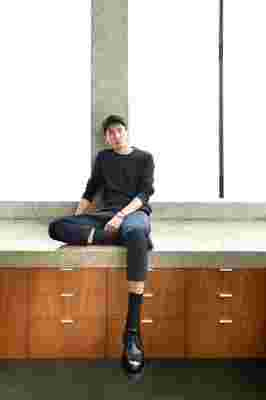Self-Portrait Designer Han Chong’s London Home Is a Serene Sanctuary
Long before Marie Kondo encouraged us all to cleanse our homes of things that weren’t sparking joy, fashion designer Han Chong was already living a pared-down, just-the-basics lifestyle in his 5.5-floor London home. “People who come to my place say, ‘How come your house is so minimal?’ Or, ‘Did you just move in?’” he says. “But that’s how I like it. Having a lot of stuff is not very me.”
The Malaysian-born mastermind behind fashion label Self-Portrait actually moved into the concrete-heavy Shoreditch home about three years ago, when he paid more than its asking price to make sure he wouldn’t lose it. “In London, it's either Victorian buildings or, well, there's not a lot of different choices, especially in the area I wanted to live in,” he says. “I had been looking for this type of concrete house in London for quite a while—seven or eight years—so when I found this space I thought, This couldn’t be more perfect.”

Chong transformed an extra bedroom into a library (he mostly reads art books) with a wraparound walkway and staircase. A yellow Gerrit Rietveld chair adds a pop of color against the custom terrazzo floor.
The stand-alone home, built in the 1990s by architect William Russell, gives Chong a sense of calm that counteracts his busy day job, but also inspires him when he works from home. “My schedule is quite crazy, so when I go home, I want it to be a calming place where I can focus,” he says. That meant keeping things simple and not overcomplicating the design.
To create a serene scene, Chong lived in the house for a full year before making any major adjustments with architecture firm Casper Mueller Kneer, who also designed Self-Portrait’s flagship store in London. “I had to live in it for a while to see how I felt, how my life was day by day, and how the light would come in,” he says.
After that, the team went to work and tore down walls to give the cubic concrete slab a warm, airy feel. (Heatedfloors help, too.) They created hangout zones, and even transformed a second bedroom into a floor-to-ceiling art-book library with a metal wraparound balcony.

The designer sticks to a minimalistic uniform too. “I have jackets, some hoodies, and some T-shirts,” he says. “I buy a little, but I buy good. We don't need that much to live.”
Then came furniture, art, and objects, mostly chosen within a neutral palette and sleek midcentury shapes—all part of Chong’s less-is-more ethos. “I wanted to keep the house quite empty, so you can actually feel the space,” he says.
The ultimate resource for design industry professionals, brought to you by the editors of Architectural Digest

Still, he added a few adornments that help him relax: A sleek black daybed on the rooftop is a place where he can gaze at the skyline, and a sunken tub is a chic, soothing spot for catching up on email. In the library, a cream-colored modular sofa is ideal for curling up with a book. The minimalism is all by design. “I only collect the pieces I feel relate to, or are from, a particular design period,” he says. “I don’t have a lot of stuff because I don’t need that many things.” And the things he does have are, well, obviously joy-sparking.